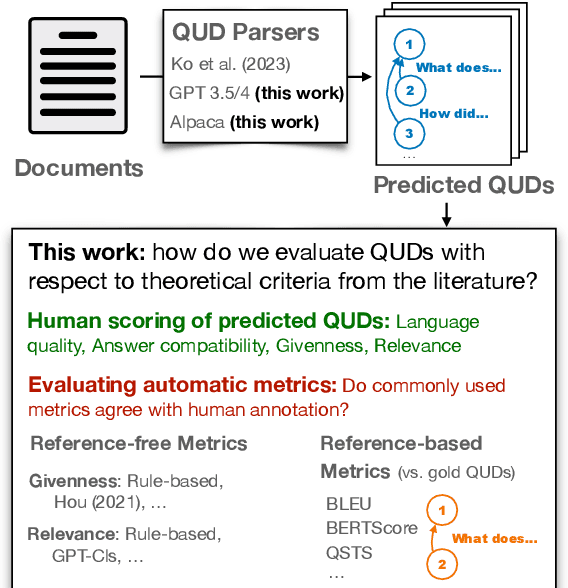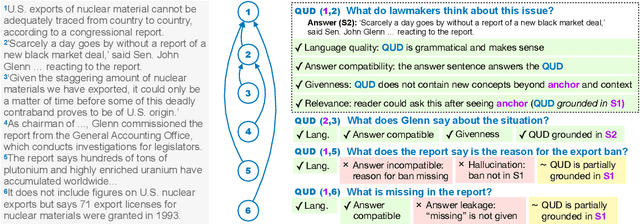Ritika Mangla
Which questions should I answer? Salience Prediction of Inquisitive Questions
Apr 16, 2024Abstract:Inquisitive questions -- open-ended, curiosity-driven questions people ask as they read -- are an integral part of discourse processing (Kehler and Rohde, 2017; Onea, 2016) and comprehension (Prince, 2004). Recent work in NLP has taken advantage of question generation capabilities of LLMs to enhance a wide range of applications. But the space of inquisitive questions is vast: many questions can be evoked from a given context. So which of those should be prioritized to find answers? Linguistic theories, unfortunately, have not yet provided an answer to this question. This paper presents QSALIENCE, a salience predictor of inquisitive questions. QSALIENCE is instruction-tuned over our dataset of linguist-annotated salience scores of 1,766 (context, question) pairs. A question scores high on salience if answering it would greatly enhance the understanding of the text (Van Rooy, 2003). We show that highly salient questions are empirically more likely to be answered in the same article, bridging potential questions (Onea, 2016) with Questions Under Discussion (Roberts, 2012). We further validate our findings by showing that answering salient questions is an indicator of summarization quality in news.
QUDEVAL: The Evaluation of Questions Under Discussion Discourse Parsing
Nov 01, 2023



Abstract:Questions Under Discussion (QUD) is a versatile linguistic framework in which discourse progresses as continuously asking questions and answering them. Automatic parsing of a discourse to produce a QUD structure thus entails a complex question generation task: given a document and an answer sentence, generate a question that satisfies linguistic constraints of QUD and can be grounded in an anchor sentence in prior context. These questions are known to be curiosity-driven and open-ended. This work introduces the first framework for the automatic evaluation of QUD parsing, instantiating the theoretical constraints of QUD in a concrete protocol. We present QUDeval, a dataset of fine-grained evaluation of 2,190 QUD questions generated from both fine-tuned systems and LLMs. Using QUDeval, we show that satisfying all constraints of QUD is still challenging for modern LLMs, and that existing evaluation metrics poorly approximate parser quality. Encouragingly, human-authored QUDs are scored highly by our human evaluators, suggesting that there is headroom for further progress on language modeling to improve both QUD parsing and QUD evaluation.
 Add to Chrome
Add to Chrome Add to Firefox
Add to Firefox Add to Edge
Add to Edge